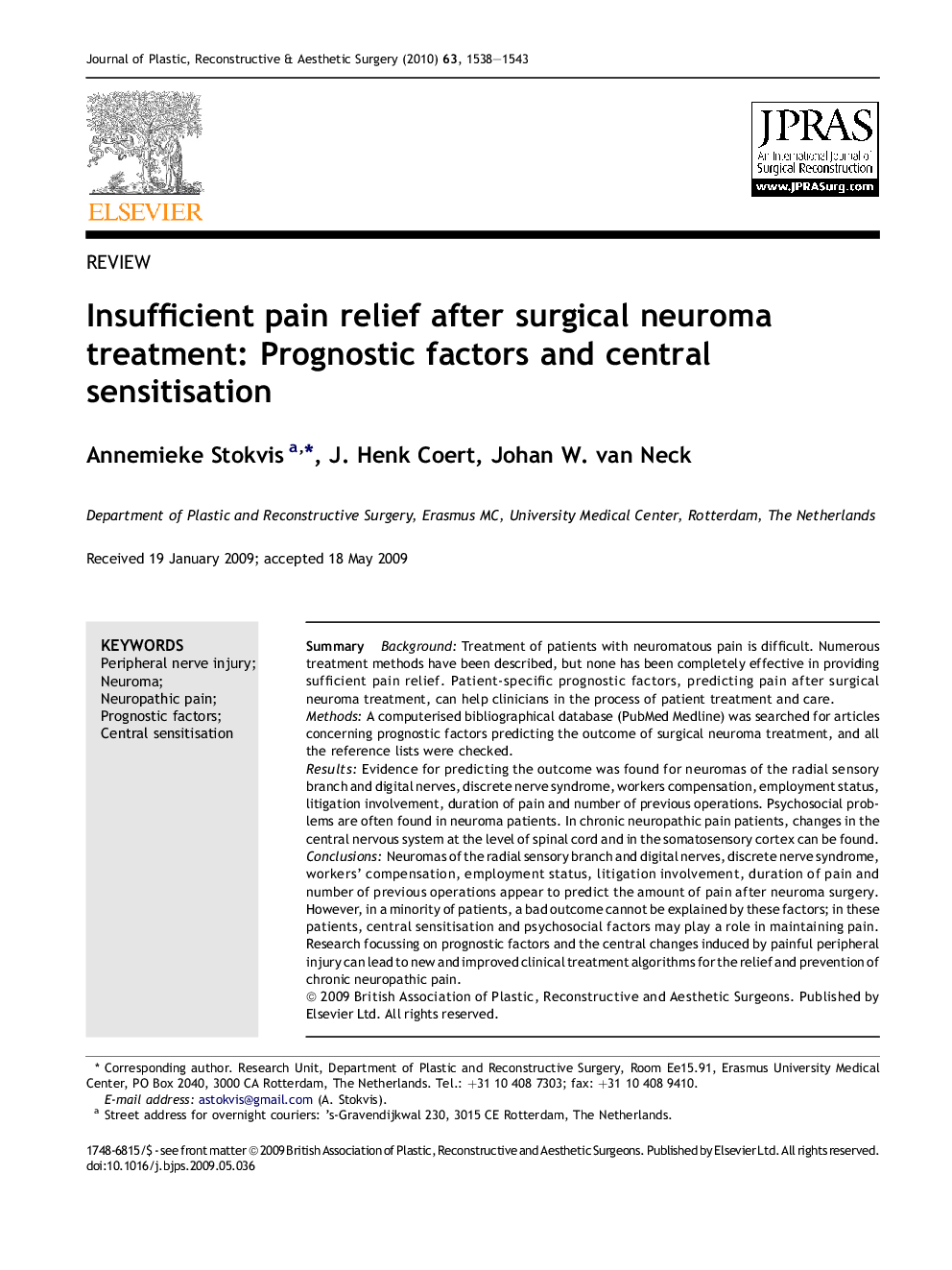| Article ID | Journal | Published Year | Pages | File Type |
|---|---|---|---|---|
| 4119586 | Journal of Plastic, Reconstructive & Aesthetic Surgery | 2010 | 6 Pages |
SummaryBackgroundTreatment of patients with neuromatous pain is difficult. Numerous treatment methods have been described, but none has been completely effective in providing sufficient pain relief. Patient-specific prognostic factors, predicting pain after surgical neuroma treatment, can help clinicians in the process of patient treatment and care.MethodsA computerised bibliographical database (PubMed Medline) was searched for articles concerning prognostic factors predicting the outcome of surgical neuroma treatment, and all the reference lists were checked.ResultsEvidence for predicting the outcome was found for neuromas of the radial sensory branch and digital nerves, discrete nerve syndrome, workers compensation, employment status, litigation involvement, duration of pain and number of previous operations. Psychosocial problems are often found in neuroma patients. In chronic neuropathic pain patients, changes in the central nervous system at the level of spinal cord and in the somatosensory cortex can be found.ConclusionsNeuromas of the radial sensory branch and digital nerves, discrete nerve syndrome, workers' compensation, employment status, litigation involvement, duration of pain and number of previous operations appear to predict the amount of pain after neuroma surgery. However, in a minority of patients, a bad outcome cannot be explained by these factors; in these patients, central sensitisation and psychosocial factors may play a role in maintaining pain. Research focussing on prognostic factors and the central changes induced by painful peripheral injury can lead to new and improved clinical treatment algorithms for the relief and prevention of chronic neuropathic pain.
